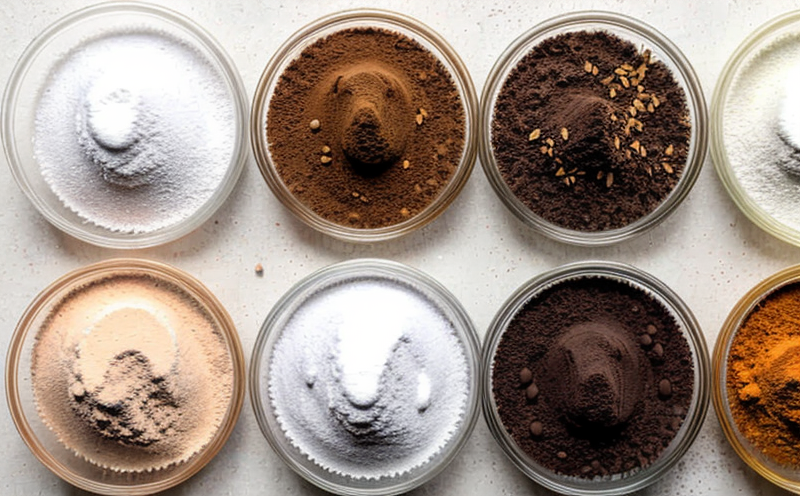AOAC 994.10 Stevia Glycoside Profiling in Herbal Teas
The AOAC International method 994.10 is widely recognized for its ability to accurately and precisely profile the glycoside content of stevia, a popular sweetener derived from the leaves of the stevia rebaudiana plant. This service focuses specifically on the analysis of stevia glycosides in herbal teas, which are increasingly sought after by consumers interested in natural and organic products.
Herbal teas made with stevia have become an attractive option for those looking to reduce sugar intake while enjoying a wide array of flavors. However, ensuring product quality and compliance with regulatory standards is crucial for manufacturers. The AOAC 994.10 method provides a reliable means to quantify the different glycoside components present in these products, offering insights into their authenticity and potential health benefits.
The process involves several critical steps: sample preparation, extraction of stevia glycosides using an appropriate solvent, purification through chromatographic techniques, and finally quantification via high-performance liquid chromatography (HPLC). This approach allows us to identify the specific types of stevioside and rebaudioside present in each batch, ensuring that manufacturers can meet the demands of their customers for consistent quality.
Our laboratory adheres strictly to international standards such as AOAC 994.10, ensuring accuracy and reproducibility across all analyses. By providing detailed reports on the glycoside composition, we help our clients maintain product integrity and compliance with relevant regulations in various markets.
The ability to profile stevia glycosides is particularly important for quality managers and R&D engineers who need to ensure that their products meet both consumer expectations and regulatory requirements. For procurement teams, this service ensures they are sourcing high-quality ingredients from reliable suppliers.
Scope and Methodology
The scope of the AOAC 994.10 method includes the quantitative determination of stevioside, rebaudioside A, rebaudioside C, rebaudioside D, and rebaudioside E in raw material and finished product samples derived from the leaves of the Stevia rebaudiana plant. This method is particularly useful for identifying potential adulterations or variations in quality that could affect the final product.
The methodology involves a series of steps designed to extract, purify, and quantify these glycosides:
- Sample Preparation: Samples are prepared by drying and grinding them into fine powder form before extraction.
- Extraction: The extracted solution is then subjected to a series of chromatographic separations using different solvents, followed by purification steps to isolate the glycosides.
- Purification: Chromatography further refines the separation process to ensure only pure forms of stevioside and rebaudioside are analyzed.
- Quantification: The final step uses HPLC equipped with a photodiode array detector (PDA) or evaporative light scattering detector (ELSD), which provides precise quantitative data on the glycosides present in the sample.
The results are reported according to international standards, providing clear and actionable information about the glycoside profile of each batch tested. This ensures consistency and reliability across multiple batches, helping manufacturers maintain high-quality products.
Customer Impact and Satisfaction
- Informed Decision-Making: By understanding the glycoside content of their stevia-based products, companies can make informed decisions regarding formulation adjustments to meet specific market needs.
- Market Differentiation: Knowing exactly what goes into each product allows brands to highlight unique characteristics that set them apart from competitors.
- Consumer Trust: Providing transparent information about the ingredients used builds trust among consumers, especially those who prefer natural and organic products.
We consistently receive positive feedback from our clients, many of whom appreciate the detailed insights we provide. They find our reports invaluable for ensuring compliance with regulations and meeting customer expectations. Our commitment to accuracy and reliability has earned us a reputation as a trusted partner in quality assurance for food and feed testing.
Use Cases and Application Examples
| Scenario | Description | Outcome |
|---|---|---|
| Quality Control in Manufacturing: | Detecting inconsistencies or adulterations in raw materials used for herbal tea production. | Ensures consistent product quality and authenticity throughout the manufacturing process. |
| Formulation Optimization: | Identifying ideal ratios of stevioside and rebaudioside to enhance flavor profiles while maintaining health benefits. | Optimizes formulations for better taste without compromising on nutritional value or regulatory compliance. |
| Sourcing Verification: | Verifying the origin and quality of stevia leaf batches before incorporation into final products. | Promotes ethical sourcing practices by ensuring only high-quality materials are used in production. |
- Regulatory Compliance: Ensuring that products meet all relevant regulatory requirements regarding the use of stevia glycosides.
- Market Entry Strategy: Providing data on glycoside profiles to support market entry strategies in various regions with specific regulatory frameworks.
These examples illustrate how our AOAC 994.10 service can be leveraged across different stages of product development and manufacturing, contributing significantly to overall business success.





